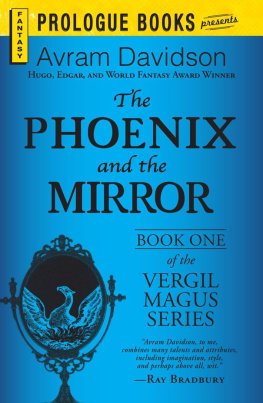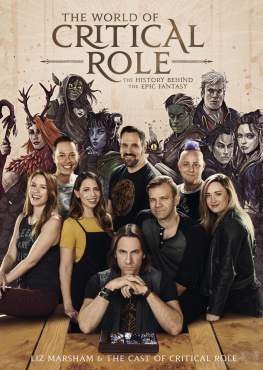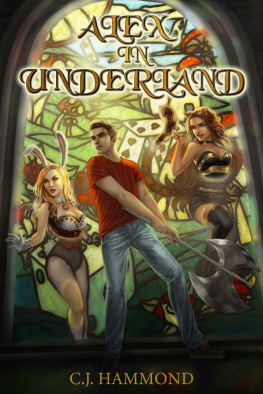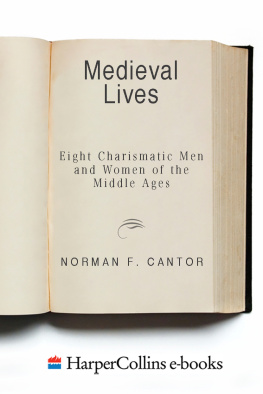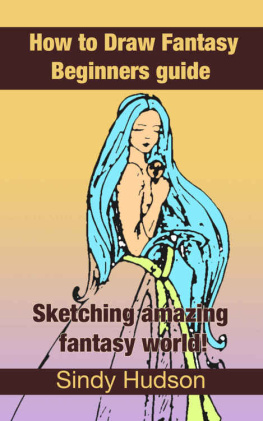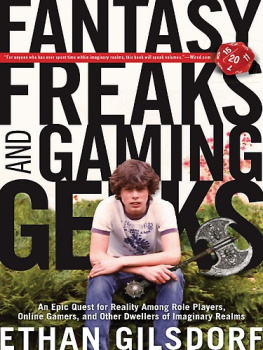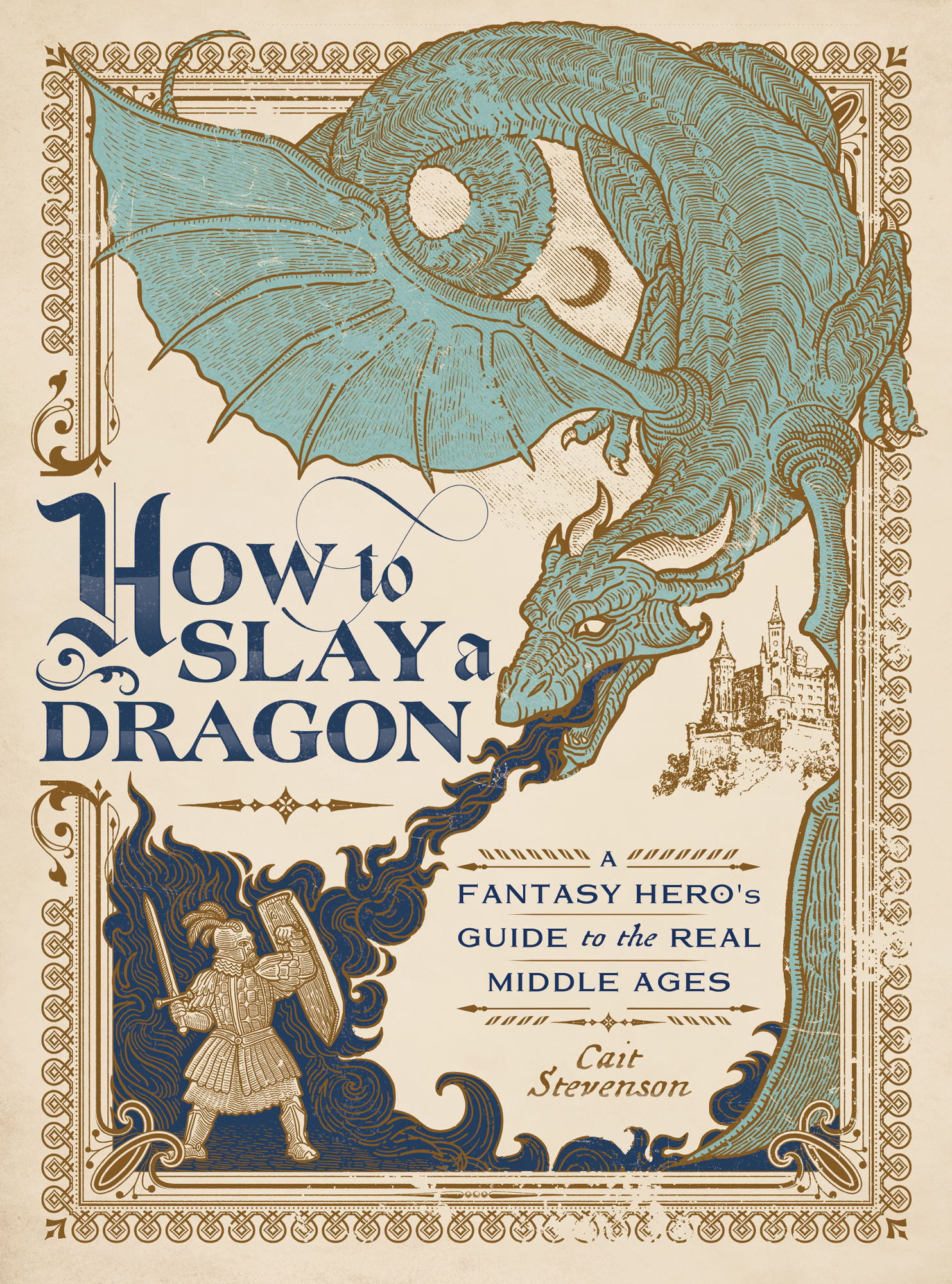CONTENTS
Guide
How to Slay a Dragon
A Fantasy Heros Guide to the Real Middle Ages
Cait Stevenson

An Imprint of Simon & Schuster, Inc.
1230 Avenue of the Americas
New York, NY 10020
www.SimonandSchuster.com
Text copyright 2021 by Caitlin Stevenson
All rights reserved, including the right to reproduce this book or portions thereof in any form whatsoever. For information, address Simon & Schuster Subsidiary Rights Department, 1230 Avenue of the Americas, New York, NY 10020.
First Tiller Press hardcover edition August 2021
TILLER PRESS and colophon are registered trademarks of Simon & Schuster, Inc.
For information about special discounts for bulk purchases, please contact Simon & Schuster Special Sales at 1-866-506-1949 or .
The Simon & Schuster Speakers Bureau can bring authors to your live event. For more information or to book an event, contact the Simon & Schuster Speakers Bureau at 1-866-248-3049 or visit our website at www.simonspeakers.com.
Interior design by Jennifer Chung
Illustrations by Bruno Sols
Floral art borders by Vecteezy.com
Cover design by Patrick Sullivan
Cover illustration by Bruno Solis
Library of Congress Cataloging-in-Publication Data
Names: Stevenson, Caitlin, author.
Title: How to slay a dragon : a fantasy heros guide to the real Middle Ages / by Cait Stevenson. Description: First Tiller Press hardcover edition. | New York : Tiller Press, 2021. | Includes bibliographical references. Identifiers: LCCN 2021003899 (print) | LCCN 2021003900 (ebook) | ISBN 9781982164119 (hardcover) | ISBN 9781982164133 (ebook) Subjects: LCSH: Civilization, Medieval. | Middle Ages. | Quests (Expeditions)
Classification: LCC CB353 .S747 2021 (print) | LCC CB353 (ebook) | DDC 909.07dc23
LC record available at https://lccn.loc.gov/2021003899
LC ebook record available at https://lccn.loc.gov/2021003900
ISBN 978-1-9821-6411-9
ISBN 978-1-9821-6413-3 (ebook)
For Dr. Mark Smith, who knows that loving the past means passing it on

AUTHORS NOTE
F ive years ago, someone asked me whether medieval rulers ever made plans for dealing with a dragon attacking their castle. I offered a few generic lines about the Dark Ages not actually being dark, and people knowing perfectly well that dragons are myth. But wheres the passion in that answer, wheres the imagination, wheres the history? How does it lead you into another world thats also our own? Instead, I should have woven answers about how people dealt with fires racing from rooftop to rooftop in the Cairo slums, or imagined Londoners trying to fight air pollution. Ive spent the past five years regretting my response that day. How to Slay a Dragon is my work of penance.
In my subtitle, I call the period that were discussing the Real Middle Ages; this is a history book, although just a wee bit nontraditional. The stories, facts, and what they say about the Middle Ages all come from peer-reviewed secondary scholarship or my own consultation of primary sources. There are very few footnotes. (On the plus side, there are also no endnotes, because endnotes were clearly invented by elf-demons with a grudge.) Ive kept a running list of references to keep me honest. Many of the primary source quotations are mine, but lack of access to some original-language texts and my inability to read Arabic mean Ive occasionally relied upon the efforts of other scholars. Their work is credited in a section at the end of the book.
In several chapters, my interpretation of some primary sources differs from that of current scholarship. Ive tried to briefly justify my views in each case, but we can all be grateful that this book isnt the place for full-blown academic arguments.
Ive been a contributor to AskHistorians, one of the worlds largest and most successful public history forums (www.askhistorians.com), for five years (what a coincidence). Very rarely, Ive borrowed ideas or even a few sentences from one of my earlier answers (writing as /u/sunagainstgold) in this book. Per Reddits terms of service, I hold the copyright to all my AskHistorians writing.
In some cases, Ive relied upon scholarship conventions, such as the use of modern names for prominent figures (Charlemagne instead of Karolus Magnus) but the original forms for lesser-known ones (Katharina Tucher instead of Catherine). Non-Latin alphabets are transliterated (changed into our alphabet) without diacritical marks (for example, a instead of a). Because medieval languages love you and want you to be happy, the name of one Slovak bandit family can be written as Glowaty or Hlavatytheyre still the same people who took the same town hostage. In cases like these, Ive kept to one spelling throughout.
In other entries, Ive trampled over scholarly conventions in ways that will leave other medievalists curled up in agony. Most notably, this includes the use of modern place names unless absolutely necessary. (Also, the Middle Ages ended in the 1520s, and I am unassailably correct about this. Unassailably.)
All of this is to say that the Middle Ages are the best ages, and Ive done my best to pass on my love to you.
CAPITULUM INFODUMPIUM
A thousand years and a hemisphere. The medieval world had a thousand years and half the planets worth of other people you could have been.
You could have been Margaretha Beutler. After her wealthy husbands untimely death, Beutler donated all her money to the poor and journeyed around southwest Germany for five years, funded by those who donated money to her instead of to the poor. During her travels, she was probably preachingin an age when Christian women were not allowed to preach or teach religion in public. Until, that is, she was arrested in Marburg for being an evil thief and sentenced to death by drowning. Understandably, Beutler preferred to make some powerful friends who found her a spot in a monastery instead, after which she went on to lead several monasteries of her own.
Or you could have been Pietro Rombulo, the Arab-Italian merchant who moved to Ethiopia, started a family, became the kings ambassador to Italy (and possibly India), and befriended an Ethiopian-Italian servant and a bishop.
You could at least have been Buzurg Ibn Shahriyar, who was not a real person but was still a celebrity, known for writing a book that included all the incredible stories people told him about pirates and sea monsters and islands beyond the edge of the world.
Nope.
Youre just you. You get to live in this village fourteen miles from the nearest market town and 1,400 miles from a town that doesnt need air quotes to merit the name. Everyone in your village gossips in terror-laced excitement about the apocalypse, but you just think bitterly that the apocalypse wouldnt even acknowledge the existence of your village.


